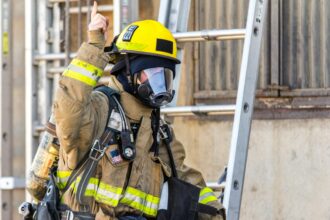The Use of Aqueous Film-Forming Foam (AFFF) in Navy Operations
For more than half a century, the Department of Defense (DoD) has mandated the use of firefighting foam containing per- and polyfluoroalkyl substances (PFAS), known as AFFF, resulting in potential PFAS contamination at over 700 military sites across the United States. AFFF has been extensively used on Navy aircraft carriers due to its effectiveness in combating aviation fuel fires and quickly containing such incidents.
Regulatory Changes and Impact on Airports
In January 2023, the DoD introduced new regulations governing the use of firefighting foam to extinguish jet fuel fires, requiring the cessation of purchasing PFAS-based foams by October 1, 2023, and the discontinuation of their use entirely by October 1, 2024. Suppliers of firefighting foam are now mandated to confirm that their products do not contain intentionally added PFAS and undergo rigorous testing to ensure the absence of PFAS compounds. These changes are set to significantly impact airports, as American civilian airports are currently obligated by the Federal Aviation Administration (FAA) to adhere to military standards, although many already use PFAS-free foam. Congress previously directed the FAA to permit airports to transition to PFAS-free foams by 2021, but the agency aligned its regulations with military standards, hindering airports from making the switch. The updated specifications will remove this obstacle, allowing airports to adopt safer alternatives.
Health Risks Associated with PFAS Exposure
Exposure to PFAS is linked to various health risks, including certain cancers, reproductive and developmental issues, and immune system disorders. PFAS, also known as “forever chemicals,” are substances used to impart grease resistance, waterproofing, non-stick properties, and stain resistance to products. These chemicals are persistent, remaining in a person’s system long after initial exposure, potentially leading to the development of health complications over time.
Cancers Associated with AFFF Exposure
Several health organizations have established a connection between certain PFAS chemicals and an increased risk of cancer among military firefighters. The following cancer types have been most strongly linked to exposure to PFAS in AFFF firefighting foam:
- Ovarian Cancer
- Non-Hodgkin’s Lymphoma
- Prostate Cancer
- Kidney Cancer
- Pancreatic Cancer
- Liver Cancer
- Bladder Cancer
- Lymphoma
- Breast Cancer
- Leukemia
- Testicular Cancer
These associations underscore the importance of transitioning to safer firefighting foam alternatives and implementing stricter regulations to protect military personnel and civilian populations from the harmful effects of PFAS exposure.



















